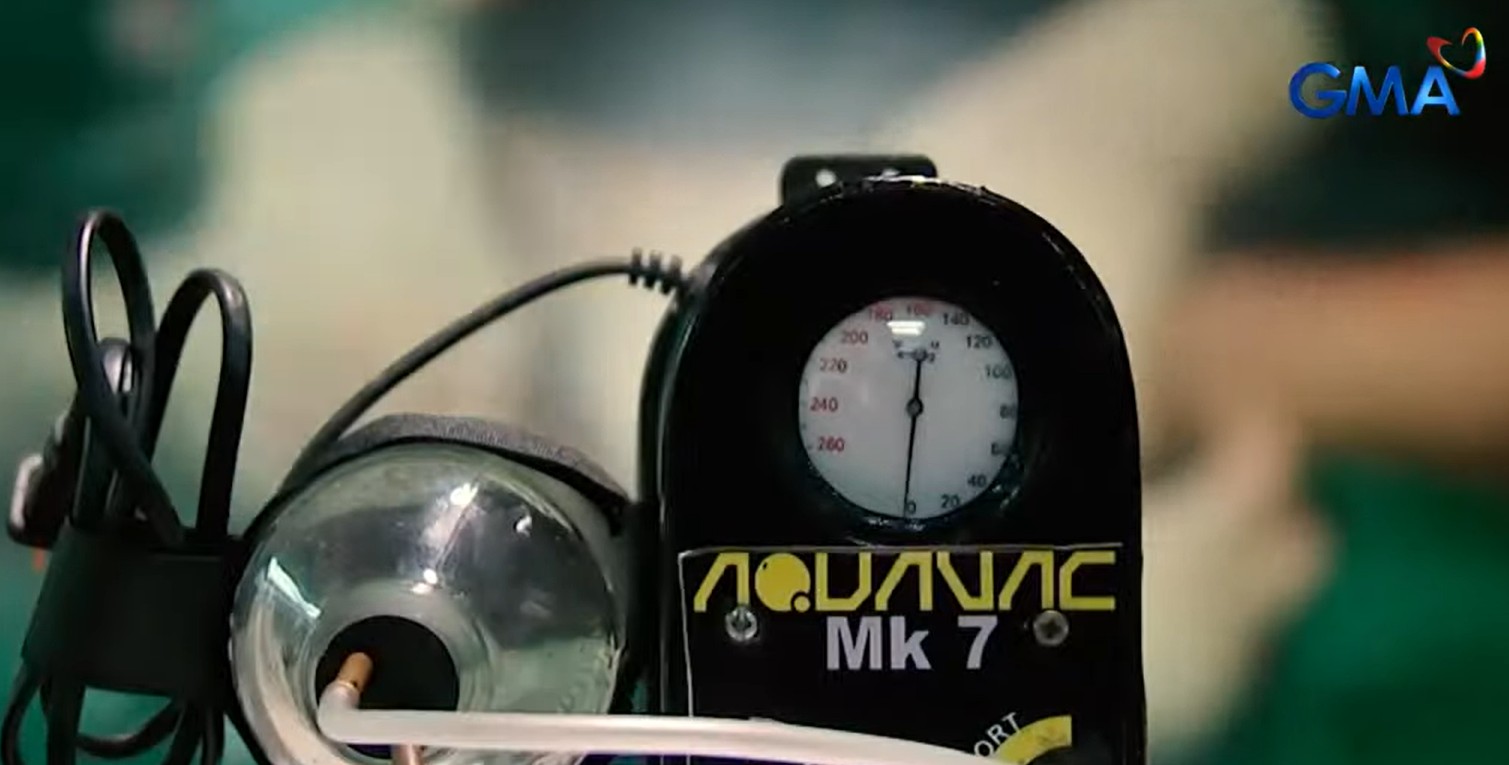Bacolod doctor develops aquarium pump-based device that heals wounds faster

A Bacolod City-based orthopedist has developed a cheaper local version of a vacuum-assisted closure, a device that can help severe wounds such as those sustained in accidents heal faster.
According to the Game Changer segment of Monday’s 24 Oras, vacuum-assisted closure devices that use pressure to close wounds and stimulate tissue growth cost from P200,000 to P300,000.
The Aquavac, developed by orthopedic Dr. Kim Jingo, is a locally made version of the vacuum-assisted closure.
Jingo said that the vacuum-assisted closure was inaccessible to the country due to its hefty price tag.
“Kasi dun sa ospital namin marami kaming pasyente sa motorsiklo, yung uso pa yung mga paputok. Yung problema namin wala kaming ganun,” Jingco said.
(In our hospital, we have a lot of patients who were caught in a motorcycle accident and injured by firecrackers. The problem is we don’t have a device to help with healing.)
To help his patients, Jingo improvised by converting an aquarium pump to simulate the effects of vacuum-assisted closure.
“Ang ginagawa niya, Number 1, because may vacuum siyempre nagko-collapse yung foam, yung sugat parang nagshi-shrink din ng konti so lumiliit ng lumiliit yung sugat. We compared it sa US na brand. And yung study nagpapakita na pareho lang yung effect niya,” Jingo said.
(The Aquavac has a vacuum that collapses the foam so the wound gradually shrinks. We compared it to a US brand product, and the study showed that it has a similar effect.)
Jingco’s device has so far saved the arm of a bus accident survivor who was at risk of losing it.
Due to funding from the Department of Science and Technology, Aquavac was enhanced and now has a digital version called “Aquavac Advance.”
The pressure can be seen at the front of Aquavac’s latest version. It can be adjusted depending on the severity of the wound.
A canister located at the back of the device collects all the fluids, including the bacteria and edema.
A piece of foam is first placed on top of a wound followed by a dressing. Afterwards, a tubing component attached to a pump is placed in the middle of the foam.
Compared to imported versions, the Aquavac costs P50,000 per unit and is now used in some hospitals in the country.
“We're developing another one na may installation na siya. Merong pina-pump na antibiotic solution (We're developing another one with an installation where it can pump an antibiotic solution),” Jingo said. —Mariel Celine Serquiña/RF, GMA Integrated News




